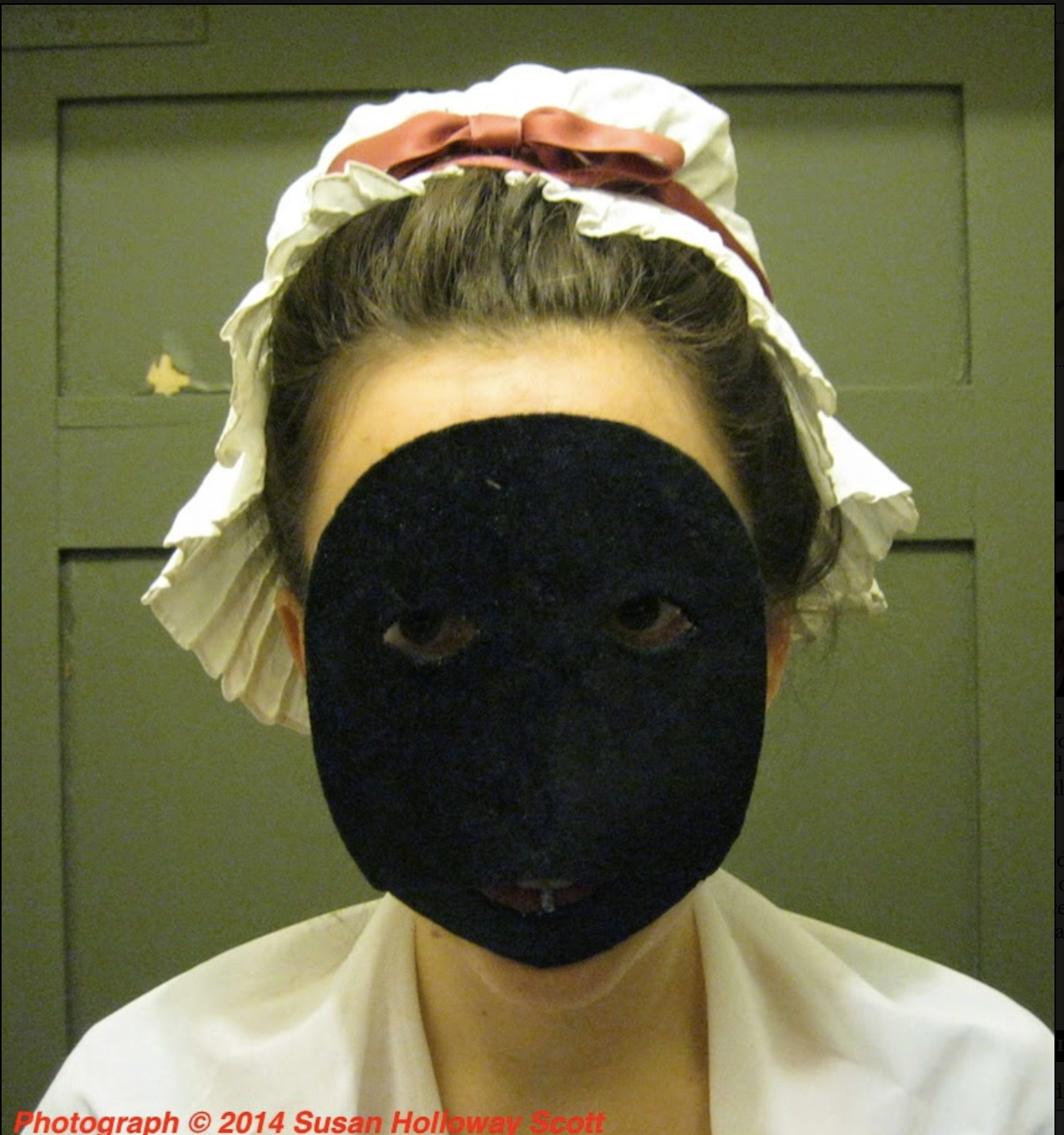Since masks are back in the news - and also once again making fashion statements as well as being worn for reasons of health, I though I’d revisit this older post about masks in the 18thc. Masks frequently appear in portraits of the time, adding the necessary touch of mystery to fancy-dress costumes and general coquetry. But recent research by Mark Hutter, tailor in the Historic Trades Program, Colonial Williamsburg, and Philippe L.B.Halbert, PhD candidate, Yale University History of Art, shows that women were wearing masks for far more occasions than masquerades.
Masks as a fashionable accessory most likely originated in Italy, and made their way north to Britain during the 16thc. Samuel Pepys made note of women wearing black masks called visors or vizzards to attend the theater incognito in the 1660s, and they were often faulted for deceiving men (who of course believed they were entitled to know what kind of face was being hidden), and were also associated with prostitution.
But by the mid-18thc., flat oval masks like the replicas, below left, were being worn by women not only to protect their identities and their modesty, but also their complexions while riding or walking outdoors. The detail, right, from the 1751 Italian painting The Rhinoceros shows one of these masks worn by the woman at the top, contrasting with a masquerade-style half-mask worn by the gentleman in the lower right.
These oval masks were not considered objects of vanity, but as practical accessories. They preserved the face from sunburn, and were also useful in avoiding male scrutiny and judgement. Made of velvet mounted on pasteboard and lined with vellum, the masks were flat and plain, with openings for the eyes and nose. Some had colored glass in the eye-openings, a kind of primitive sun-visor. The masks did not tie around the head or over the ears like modern masks. Instead they were held in place by a bead on a loop, mounted near the mouth opening, and clasped between the wearer's teeth. (See the interior of the replica mask, below left, with the bead on a blue cord.) This awkward arrangement must have helped discourage unwanted conversation with strangers, since the clenched teeth necessary to wear the mask made speaking difficult.
What's most interesting about the masks is the ladies who were wearing them. The research conducted by Mark and Philippe prove that masks weren't simply a conceit of London ladies, but were being worn by all kinds of women in the American colonies as well. They found documentary evidence of masks from New England to Charleston, North Carolina, and being worn by upper-class ladies in cities and the daughters of farmers. Masks were also being worn by females as young as George Washington's four-year-old step-daughter Patsy and as old as a seventy-year-old Quaker grandmother.
As someone who never ventures outside without sunblock, I can sympathize with the need to protect the face from the sun. But seeing one of the replica masks worn, above left, (by Sarah Woodyard, journeywoman in the mantua-maker’s trade), with real eyes glittering behind the openings, I'm afraid I found the effect creepy in a Friday the 13th way, and suspect masks like these may be one fashion-trend that won't be revived any time soon.
Many thanks to Mark Hutter, Philippe L.B.Halbert, and Sarah Woodyard. For more information about 18thc masks, please see this recent article by Philippe.
Photographs copyright 2014 by Susan Holloway Scott.
Right: The Rhinoceros, by Pietro Longhi, 1751. Ca' Rezzonico.
Read more about Elizabeth Schuyler Hamilton in my historical novel, I, Eliza Hamilton. My latest novel, The Secret Wife of Aaron Burr, is now available everywhere. Order here.



